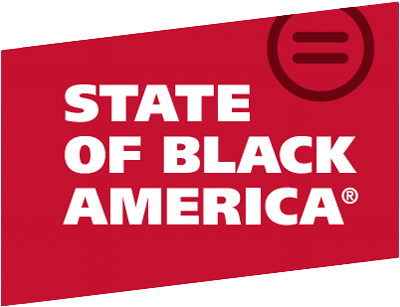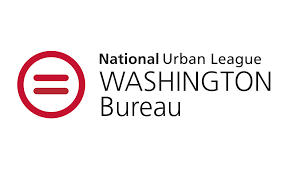Months into the new decade, a devastating global pandemic exposed and exacerbated striking economic inequality along racial lines. While many Black and low-income families have seen their health and livelihoods at increased risk, wealthier and disproportionately white families and communities have been better able to weather the economic fallout—a stark reflection of racial wealth inequality. Addressing the racial wealth gap driven in part by housing disparities is crucial to stemming the tide of economic havoc afflicting Black and low-income communities and safeguarding against future health and economic crises.
Wealth consists of a person or family’s assets, such as a home and savings, minus what is owed, like a mortgage and outstanding debt. Not only do Black families have one-tenth the wealth of white families, but white families’ wealth has steadily risen since 1996. In contrast, Black families have seen their wealth stagnate, with major losses during the 2008 recession.
Wealth inequality harms Black communities in the present and jeopardizes their futures. Racial wealth disparities explain, in part, why Black people are more likely to be sicker, hungrier, ill-housed, work in lower paying jobs and have less security in retirement than their white counterparts. Black entrepreneurs struggle from the start with lower access to capital to launch their businesses; and for those who seek to do business in their communities, customers undervalue their businesses relative to businesses in predominantly white neighborhoods. Black graduates have less wealth than whites who never graduated from high school and are held back by more debt than their white peers. Even Black families who amass some wealth face uncertainty in the next generation; 70% of Black middle class children will likely fall below middle-class status by the time they reach adulthood.
As much as wealth inequality harms Black people, it undermines society at large. A McKinsey report estimates that the Black-white wealth gap will cost the U.S. economy $1.5 trillion or 6% of GDP by 2028 due to lost consumption and investment. Wealth inequality has weakened the middle class and advanced unequal access to the political process, threatening the health of our democracy.
Uncovering the drivers of racial wealth inequality requires examining a major source of wealth creation: homeownership. The path to homeownership in this country is one that has been closed off to Black people by policy and practice at different points throughout our nation’s history.
Dating back to the end of slavery in the Reconstruction era, Black people were afforded the opportunity to acquire resources for their own economic advancement. In January 1865, the federal government granted 400,000 acres of land confiscated during the Civil War to former slaves to sustain and cultivate as free people. But by the fall of 1865, incumbent President Andrew Johnson diverted the proposed land to former slaveholders, denying Black families a starting point to economic mobility. What followed for many Black people were decades of racial terror, where state-sponsored discrimination and social violence were used as tools to disrupt and undermine wealth-building in Black communities.
While the New Deal policies of the 1920s and 1930s created new pathways to homeownership and generational wealth building, Black Americans were largely excluded from these opportunities. The federal government insured home loans but refused to back loans for homes in predominantly Black neighborhoods, deeming them as inherently high risk. Consequently, practices like redlining and restrictive covenants stymied credit access for many in majority Black neighborhoods, devalued Black communities and incentivized realtors not to sell to Black people. Such policies precluded otherwise eligible Black families from homeownership and engendered racially segregated neighborhoods, which remain a fixture of our social landscape today.
Obstacles to homeownership still abound for many Black families as our policy and financial institutions continue to fuel racial wealth inequality through structural barriers. These barriers include credit constraints and discrimination, predatory lending practices, housing pressures and insufficient responses to economic downturns. In contrast, white families continue to augment their wealth, accessing resources made exclusive to them throughout our nation’s history.
Closing the racial wealth gap will require sustained and systemic action—not the gambits of the past—once used to undermine Black wealth-building, but action that invests in advancing prosperity for Black families and communities. A crucial first step involves eliminating current obstacles to Black homeownership by reducing credit constraints and creating down payment grants that enable Black families to have initial equity in their homes. Other priorities include strengthening anti-discrimination protections in lending to ensure Black families are not exposed to the kind of predatory lending practices used by a number of banks leading up to the Great Recession.
Policy action is also needed to make homeownership more accessible for Black families. While the federal tax code provides financial incentives for home buying, a report by the Georgetown Center on Poverty and Inequality highlights how such tax provisions overwhelmingly benefit wealthier, predominantly white households. We can reform tax provisions like the Mortgage Interest Deduction to help more homeowners of color cover the costs of maintaining their homes.
But no policy will be successful without bolstering economic security for Black families and stemming patterns of wealth-stripping in Black communities. Increasing the supply of affordable housing is crucial to supporting the stability needed for Black renters to begin building wealth and prepare for a future as homeowners. We can also expand credits like the Earned Income and Child Tax Credits to better support families struggling to meet housing and other needs. In neighborhoods where disinvestment was de facto, we can institute housing revitalization grants to help generate and keep wealth and opportunity flowing into Black communities.
The success of these actions ultimately rests on their being rooted in the perspectives and experiences of Black people. Doing so starts with supporting and empowering more Black economic thought leaders. Black economists constitute just 3.1% of PhD economists, and to our collective detriment, their voices are hardly prioritized in economic policymaking. At the start of the Great Recession, Black economists sounded the alarm on Black unemployment and housing woes, but their warnings fell on deaf ears. Former Fed Chair Janet Yellen subsequently acknowledged that had the Federal Reserve listened to these concerns, the economy may have been shielded from even greater damage during the fallout in 2008. Now, as our nation grapples with a far deeper economic crisis, the voices and insights of Black economic thinkers must not be ignored again.
History shows that racial wealth inequality is deeply embedded in our national story. The economic outlook of Black people has been and remains tied to our nation’s broader outlook. To create a more prosperous and secure future requires confronting the challenge of racial wealth inequality head on with an unrelenting commitment to equity.



